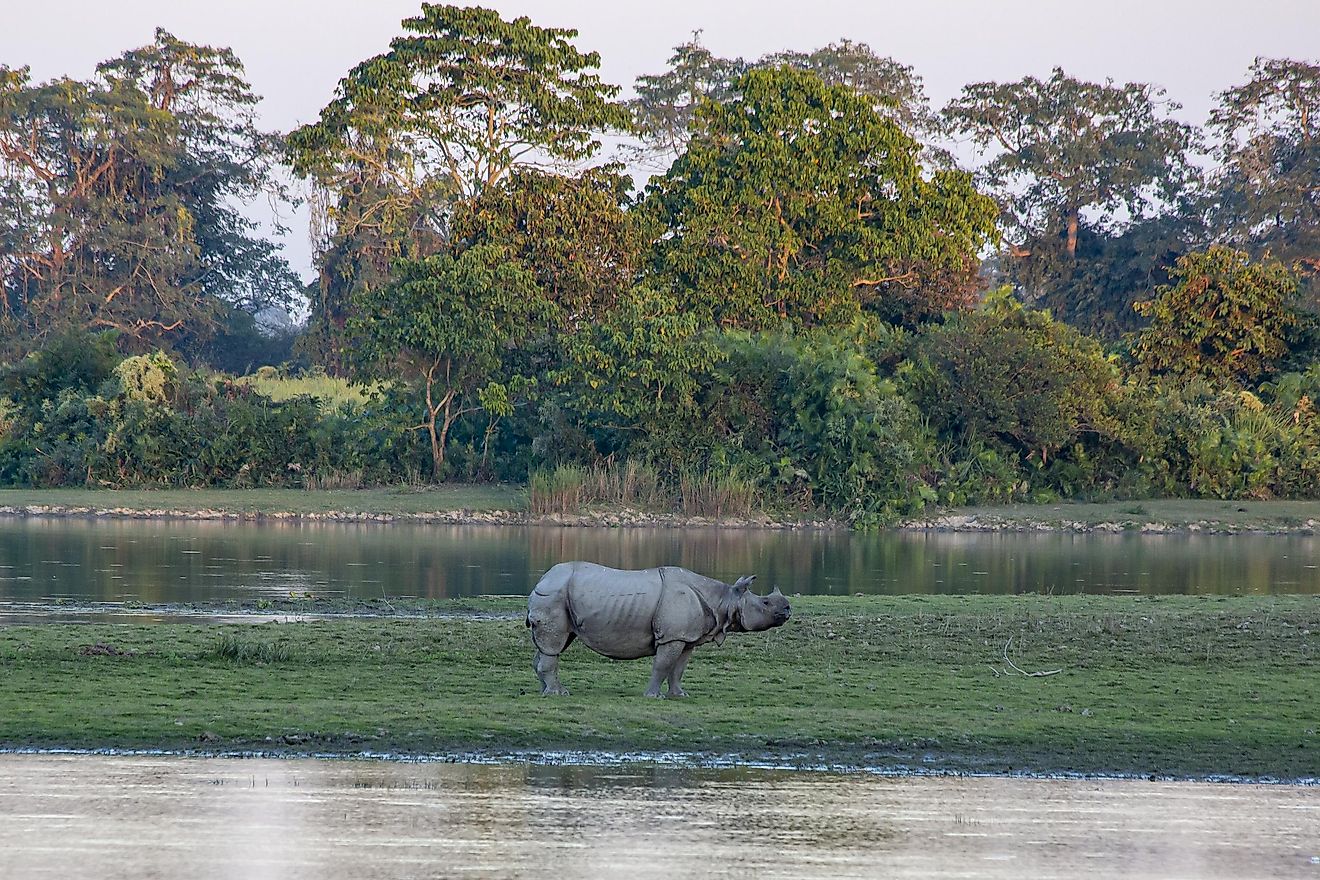
Kaziranga National Park is located in the northeast state of Assam, in India, and includes the Golaghat, Karbi Anglong, and Nagaon districts which border the Himalayas. The area was declared a UNESCO World Heritage Site, and measures roughly 430 square kilometers, or 170 square miles. The grasslands, meadows, lagoons, and forests in the region are home to a wide variety of plants and animals from the one horned rhinoceros to the Bengal tiger.
History
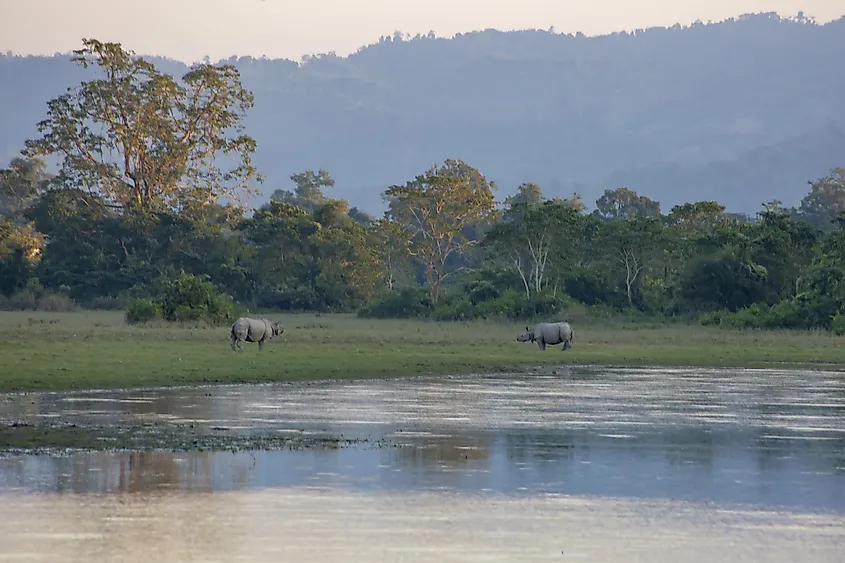
The Kaziranga National Park was first established at the suggestion of Mary Curzon, the wife of then Viceroy of India. It is said that she visited the park and upon seeing no rhinoceros, as expected, urged her husband to propose a means of protecting these creatures, and thus the area in which they lived. Because of her urging, the region became the Kaziranga Proposed Reserve Forest, in June of 1905. At this time, the park measured roughly 232 km2 (90 sq mi). From there, the park continued to grow. The next three years saw and expansion of the park’s area to roughly 380km2 (150 sq mi), reaching as far as the Brahmaputra River. At this time, it was also declared a ‘reserve forest’, and then the ‘Kaziranga Game Sanctuary’ in 1916. Hunting was allowed to continue within the park up until 1938, when it was officially banned.
In 1950, it was felt that the original game reserve name no longer fit since the banning of hunting practices in the area. It was then renamed again to the Kaziranga Wildlife Sanctuary. Eventually, in 1968, the park was declared a National Park, with official government status coming six years later in 1974. Finally, Kaziranga was declared a UNESCO World Heritage site in 1985 and has continued to be fiercely protected by locals and conservationists alike.
Geography
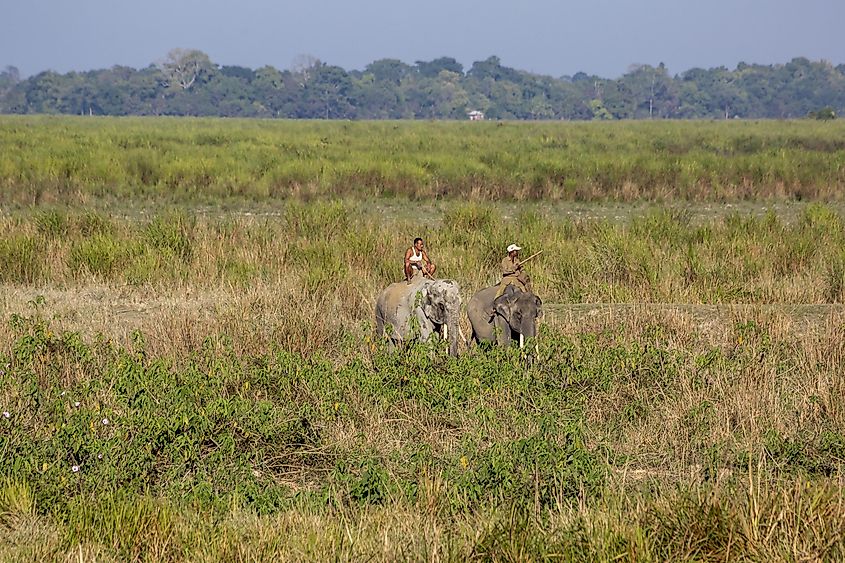
The park is nestled along the banks of the Brahmaputra river, within the Golaghat and Nagaon districts of Assam. It measures roughly 40km (25 mi) from its eastern edge to the west, and 13 km (8 mi) from north to south. In total, this means an area of 378 km2 (146 sq mi). The region is generally fairly flat, without much difference in elevation. While the Brahmaputra hugs the park’s northern and eastern edges, the south is bordered by the Mora Diphlu River. Because it is surrounded by rivers, the landscape features a lot of sandbars, as well as rich silt heavy soil.
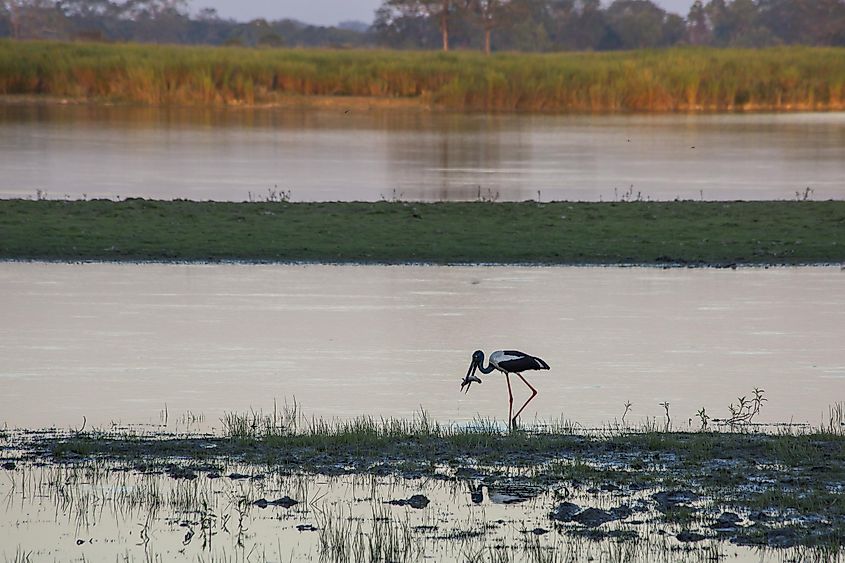
Flooding is also common during monsoon season, and large ponds and lakes form over these wet months. Riverine islands called chapories offer raised areas of safety for animals during this flooding season.
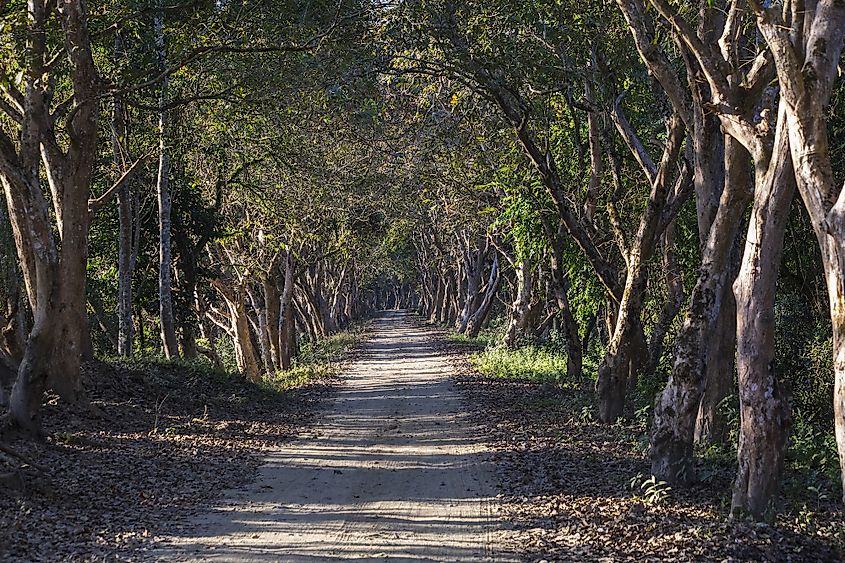
In addition to the sandbars and lowlands, the region has savanna as well as tropical and subtropical grasslands, and shrublands. Semi-evergreen forests populate much of the Brahmaputra Valley, and tropical and subtropical moist broadleaf forests populate the areas of higher elevation.
Wildlife
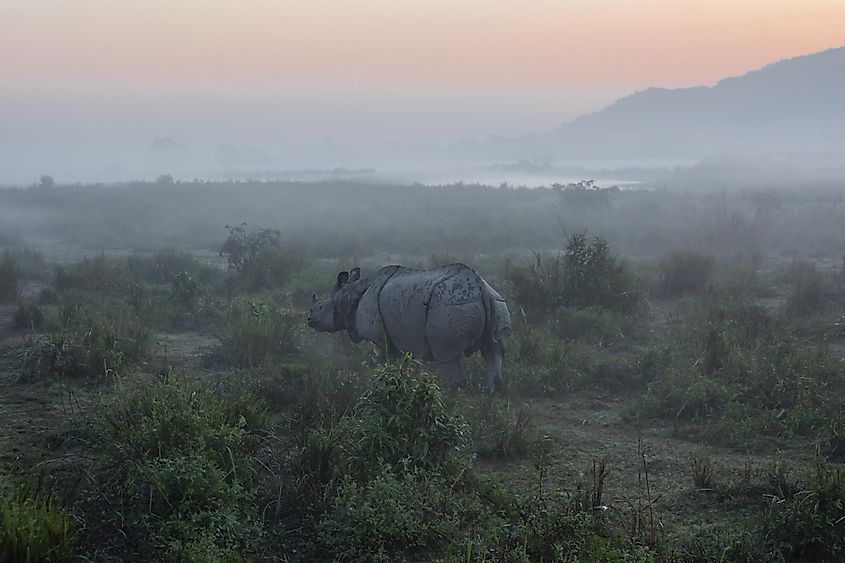
The park, and this region of India more generally, is especially known for the Indian one-horned rhinoceros. In fact, the world’s largest population of one horned rhino can be found in Kaziranga. The one horned, or Indian rhino, is the largest of the rhino species. According to IUCN, the species is listed as vulnerable.
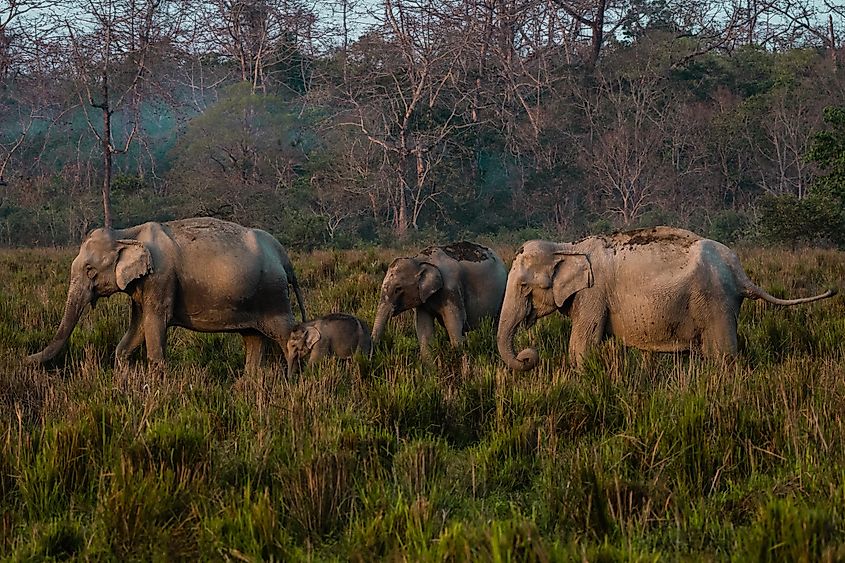
This is a drastic improvement from previous decades when the rhinos were poached and hunted so widely that it was estimated only 200 existed by the start of the 20th century. After strict protection rules and conservation efforts by India and Nepal, some 3,700 rhinos now exist in the wild as of 2021. This effort has been deemed the greatest success of any conservation effort across Asia. Fierce loyalty and protection to Kaziranga National Park has played a role in maintaining these growing rhino populations.
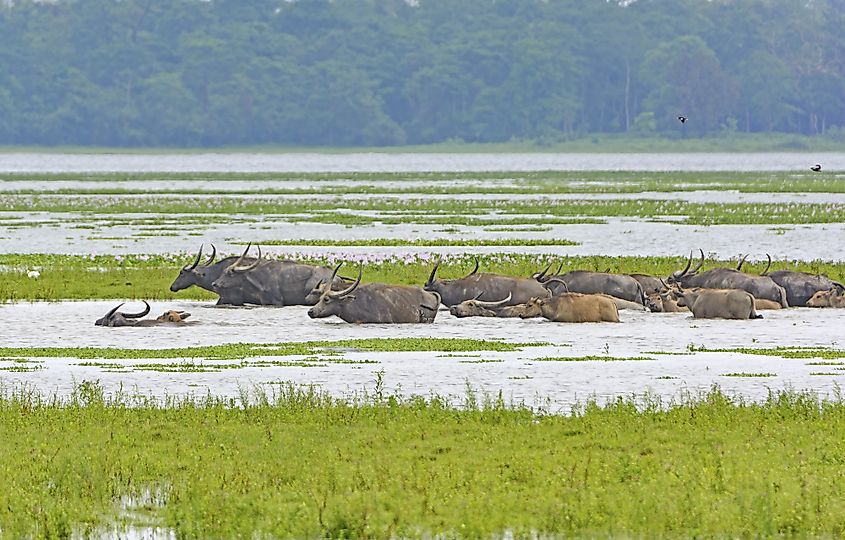
The park is also home to the largest populations of Asiatic water buffalo and eastern swamp deer in the world. Additionally, many Indian elephants frequent the area, and it has been possible to take elephant tours throughout the park over the years. A variety of deer and boar also populate the area.
Large herbivores aren’t the only big animals to be found within the region, however. Kaziranga is also home to leopards, the sloth bear, jungle cats, fishing cats, the leopard cat, and of course the Bengal tiger.
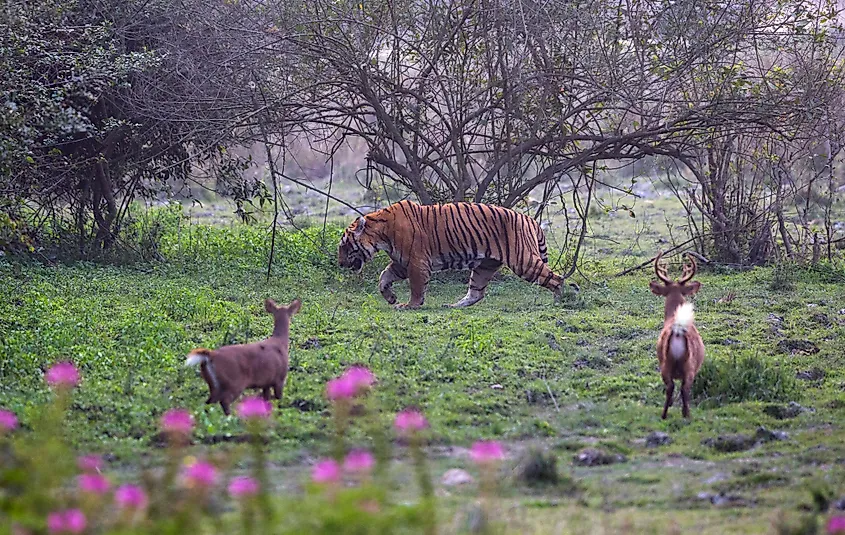
The Bengal tiger is actually a subspecies of the Continental Tiger, a type of big cat that roams the Asian mainland. Tigers, and especially Bengal tigers, are listed as endangered, and their populations have been generally decreasing over the past decades. Now, according to WWF records in 2021, there are an estimated 3,500 continental tigers in the wild. Habitat loss and poaching have both played a major role in the decline of the species, which is why conservation areas such as Kaziranga are so important. The park was officially declared a Tiger Reservation in 2006, at which time the region registered the highest concentration of tigers anywhere in the world, at 1 per 5 square kilometers, and a population of 118.
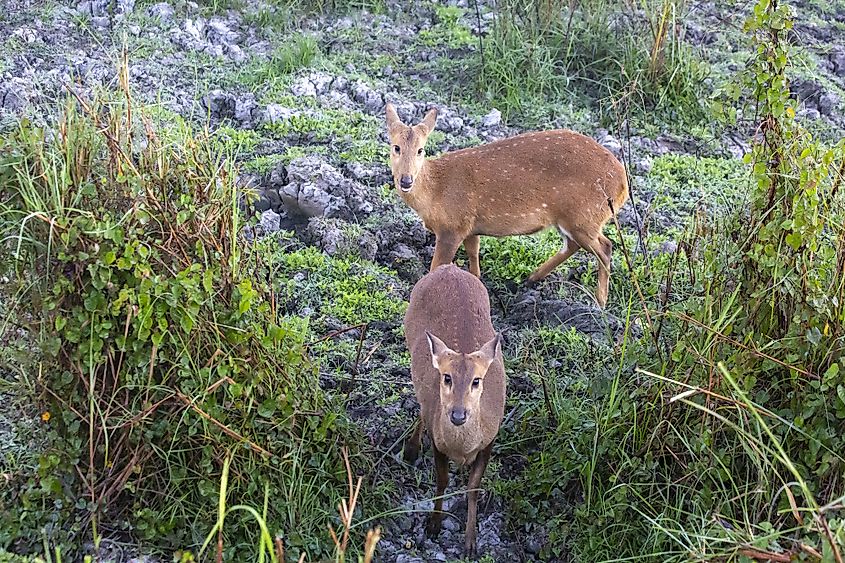
Other animals found in the region include various types of mongoose and civets, the Bengal fox, golden jackal, and both varieties of the highly poached Chinese and Indian pangolin. Nine different types of primates also live in the park, including the Assamese macaque, golden langur and capped langur, and the hoolock gibbon which is the only native ape of India. Other rare species include the hispid hare, which is endangered, and the Ganges dolphin which is a type of freshwater river dolphin found specifically in South Asia. This species is also listed as endangered. A great diversity of birds, reptiles, amphibians, and invertebrates also inhabit the protected area.
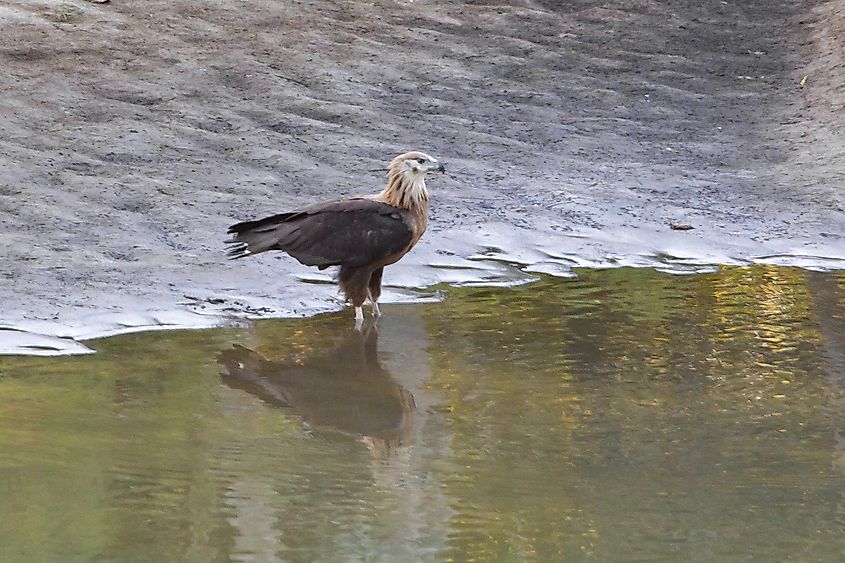
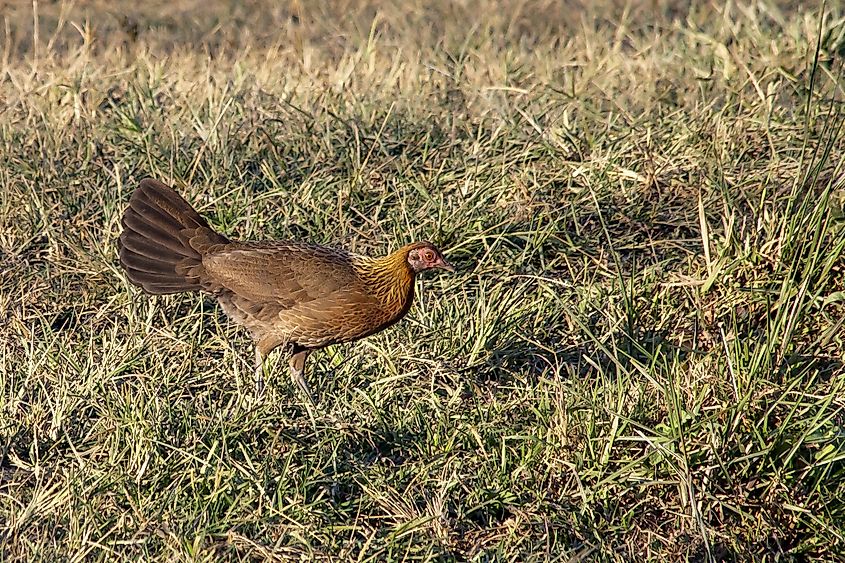
The number of vulnerable, threatened and outright endangered species found within the Kaziranga National Park is one of the main reasons it, and the conservation efforts it is involved in, are so important to maintaining the biodiversity of not only this region, but Indian, and the world at large. By protecting the natural habitat of these creatures, governments are able to help stave off poachers and ensure the species have room to grow and, hopefully, thrive.


 Users Today : 307
Users Today : 307 Total views : 464015
Total views : 464015